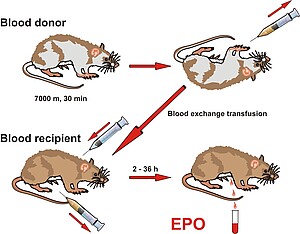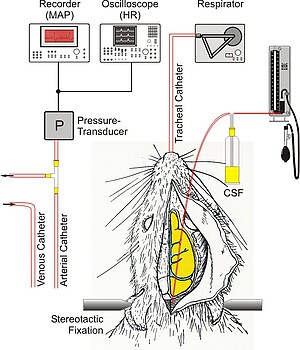Evidence for the regulation of renal erythropoietin by a brainstem factor
While the structure and function of erythropoietin (Epo) are well documented, the mechanisms of the regulation of the renal synthesis of Epo are still poorly understood. Most notably, the localization and function of the O2-sensitive sensor regulating the renal synthesis of Epo is insufficiently characterized. A body of evidence suggests that extrarenal O2-sensitive sensors, localized particularly in the brainstem, play an important role in this connection. For example, in the experimental model of the isolated rat kidney the release of Epo during hypoxic perfusion is only slightly affected by changes in the hematocrit, i.e., the O2-carrying capacity of the perfusion medium. In in-vivo-experiments in rats, decreasing the O2-supply to the kidney through reduction in renal blood flow (ischemic hypoxia) is very much less effective in increasing Epo production than reducing the hemoglobin concentration (anemic hypoxia).
Furthermore, a high cerebral hydrostatic pressure with a consecutive hypoxia of the brainstem (generated by insufflation of synthetic cerebrospinal fluid into the catheterized cisterna magna of rats) significantly increases plasma Epo levels.



